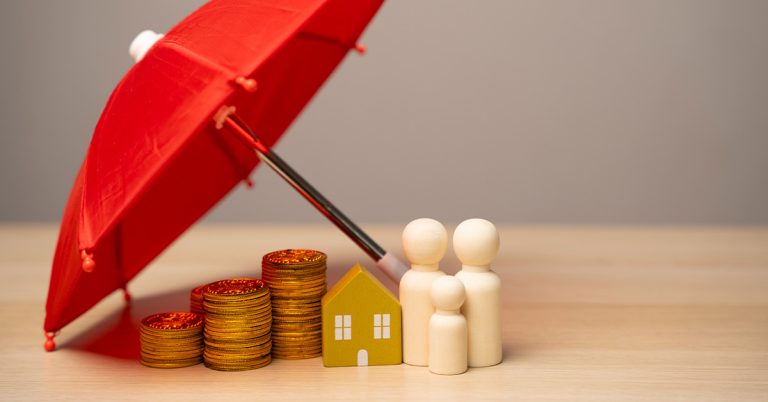You’ve got homeowners insurance, so you’re protected—right?
Don’t be so sure.
While your policy might cover the basics, there’s a chance it’s missing some critical protections. From floods and earthquakes to home-based businesses and sewer backups, many standard policies fall short in ways that could cost you thousands if disaster strikes.
And in today’s world where climate risks and insurance premiums are rising, and unexpected events are becoming all too common, a gap in your coverage could expose you to unnecessary risk.
This guide is here to help you find the blind spots in your policy, understand the real-world consequences of being underinsured, and take action to safeguard your home, your belongings, and your peace of mind.
Let’s dive in.
Topics Covered
Common Coverage Gaps in Homeowners Insurance
1. Flood Damage
Most homeowners are surprised to learn that standard homeowners insurance does not cover flood damage. This exclusion is critical, especially considering that just one inch of floodwater can cause up to $25,000 in damage.
Real-world example: During Hurricane Harvey, nearly 80% of Houston-area homeowners affected by flooding didn’t have flood insurance. Many were outside of FEMA’s high-risk zones and therefore assumed they didn’t need it. The devastation many of those homeowners faced cost tens of thousands of dollars each in out-of-pocket repairs.
To protect yourself, consider coverage through the National Flood Insurance Program (NFIP) or a private insurer, even if you don’t live in a designated flood zone. Climate change is making flooding more common even in areas that were previously unaffected.
2. Sewer Backup and Water Damage
While most homeowners policies cover water damage from sudden events like a burst pipe, they typically exclude damage from sewer backups, sump pump failures, and gradual leaks. This is a significant risk that many overlook.
Preventative measures like regular plumbing inspections, backflow valves, and a sump pump with battery backup can reduce your risk—and adding a sewer backup endorsement to your policy can provide peace of mind.
Pro tip: Contact a local insurance expert to learn which preventative measures you can take to increase protection and lower your rates.
3. Valuable Personal Property

Your standard policy likely includes personal property coverage but often limits payouts for high-value items. For example, jewelry might be capped at $1,500 total, and artwork or collectibles may not be covered at all unless specifically listed.
Example: After a burglary, a New York homeowner discovered that only $1,500 of her $10,000 diamond ring was covered under her standard policy. The rest was an uninsured loss.
If you own expensive jewelry, musical instruments, fine art, or even high-end electronics, talk to your agent about special coverages to ensure you’re compensated for the full value of your belongings.
4. Outbuildings and Detached Structures
Did you know that your detached garage, shed, or even a backyard studio might only be partially covered? Many policies limit other structures coverage to 10% of your home’s insured value.
If your home is insured for $300,000, your policy might only offer $30,000 in coverage for all detached structures—nowhere near enough if a fire destroys a high-end workshop or guesthouse.
You can increase this limit or add specific endorsements. It’s also worth verifying that fencing, gazebos, driveways, and swimming pools are fully covered if you’ve invested in outdoor improvements.
5. Home-Based Business Equipment
Remote work and entrepreneurship are on the rise, but standard homeowners policies typically exclude business-related equipment and liability.
Scenario: A Vermont graphic designer who ran her freelance business from home had her $6,000 iMac and printer stolen during a break-in. Her claim was denied—because they were considered “business property” and not covered under her standard homeowners policy. If you operate a home-based business, even part-time, you may need an endorsement, a home-based business policy, or even commercial coverage, depending on the scale of your operations.
The Rising Cost of Underinsurance: A Deep Dive
Homeowners across the United States are facing the escalating cost of home insurance premiums. This surge not only strains household budgets but also exposes many to the peril of underinsurance—where coverage falls short of actual rebuilding or replacement costs.
Between 2021 and 2024, homeowners insurance premiums surged by an average of 24%, nearly doubling the 13.2% inflation rate during the same period. This translates to an average annual increase of $648 per homeowner, with typical premiums reaching $3,303 in 2024. (Money.com)
In 2024 alone, new policy premiums increased by an average of 17.4%, up from 11.6% in 2023 and 5.9% in 2022. (Matic) Homeowners renewing policies from 2021 faced even steeper hikes, with some experiencing a 69% increase over three years.
A concerning consequence of rising premiums is the trend of homeowners reducing coverage to save costs. This underinsurance leaves many vulnerable, as their policies may not fully cover rebuilding expenses after a disaster.
Certain states have experienced disproportionate premium increases. These spikes have led to increased mortgage delinquencies and a growing number of homeowners forgoing insurance altogether.
Steps to Identify and Address Coverage Gaps
1. Review Your Policy Annually
Homeowners often overlook the importance of regularly reviewing their insurance policies. Over time, property values, personal belongings, and potential risks can change, leading to gaps in coverage.
Action Steps:
- Schedule annual reviews, especially after renovations or big purchases.
- Work with your insurance agent to identify outdated or insufficient coverage.
Example: A homeowner in Massachusetts discovered their basement remodel wasn’t covered after water damage. A simple policy review could have prevented the loss.
2. Consult with Your Insurance Agent
Insurance policies can be complex. An insurance agent can help you understand what is and isn’t covered and recommend necessary updates.
Action Steps:
- Meet with your agent annually or after major life changes.
- Ask specific questions about flood, earthquake, and other special coverages.
3. Consider Additional Coverages
Standard policies often exclude flood, sewer, and earthquake damage.
Action Steps:
- Assess geographic risks using FEMA flood maps or regional hazard data.
- Add separate flood or earthquake insurance if your area is prone.
4. Upgrade Safety Measures
Improving your home’s safety can prevent loss and lower insurance costs.
Action Steps:
- Install smoke detectors, sump pumps, and burglar alarms.
- Maintain your roof, wiring, and plumbing systems to reduce claims.
Example: A battery-backed sump pump can help you avoid water damage and potentially earn you a discount.
5. Document Your Belongings
In the event of a loss, a home inventory ensures accurate and faster claim processing.
Action Steps:
- Use apps or spreadsheets to track item descriptions, values, and receipts.
- Photograph items and store documentation in a secure cloud platform.
Example: If you lose everything in a fire you may receive minimal compensation due to lack of proof of ownership.
Pro tip: Speak with a local insurance expert to learn how to properly document your valuables.
Final Thoughts
Understanding the gaps in your homeowners insurance policy is critical to protecting your home and financial future. Rising costs, climate risks, and policy limitations make proactive insurance management more important than ever. Review your coverage regularly, ask the right questions, and ensure you’re prepared for the unexpected.
Need to learn more about homeowners insurance?
Our agents are ready to help, so contact us to learn how we can customize your insurance policies to meet your needs.
*Disclaimer: We offer content for informational purposes; Co-operative Insurance Companies may not provide all the services or products listed here. Please get in touch with your local agent to learn how we can help with your insurance needs.
Sources
United States Joint Economic Committee. Climate Risks Present a Significant Threat to the U.S. Insurance and Housing Markets.
https://www.jec.senate.gov/public/index.cfm/democrats/2024/3/climate-risks-present-a-significant-threat-to-the-u-s-insurance-and-housing-markets
Matic.com. Report: Home Insurance Premiums Continue To Surge As Regulators Navigate Impact of Volatile Market. https://matic.com/blog/mid-year-home-insurance-trends-2024/
Money.com. Home Insurance Price Hikes Are Far Outpacing Inflation. Here’s Where Premiums Cost the Most. https://money.com/home-insurance-price-hikes-inflation/
NerdWallet. Check Your Home Insurance Now, Avoid Regret Later.
https://www.nerdwallet.com/article/mortgages/property-line-adequate-home-insurance-coverage
NerdWallet. How Much Homeowners Insurance Do You Need?
https://www.nerdwallet.com/article/insurance/how-much-homeowners-insurance-do-i-need
NerdWallet. What Is Replacement Cost Insurance, and How Does It Work?
https://www.nerdwallet.com/article/insurance/replacement-cost-insurance
NerdWallet. What Is Inflation Guard for Home Insurance?
https://www.nerdwallet.com/article/insurance/inflation-guard
NerdWallet. What to Do If You Can’t Afford Your Homeowners Insurance.
https://www.nerdwallet.com/article/insurance/cant-afford-homeowners-insurance
Business Insider. The Growing Reason People Can’t Afford to Own a Home.
https://www.businessinsider.com/why-its-expensive-to-own-a-home-mortgage-insurance-interest2024-4

